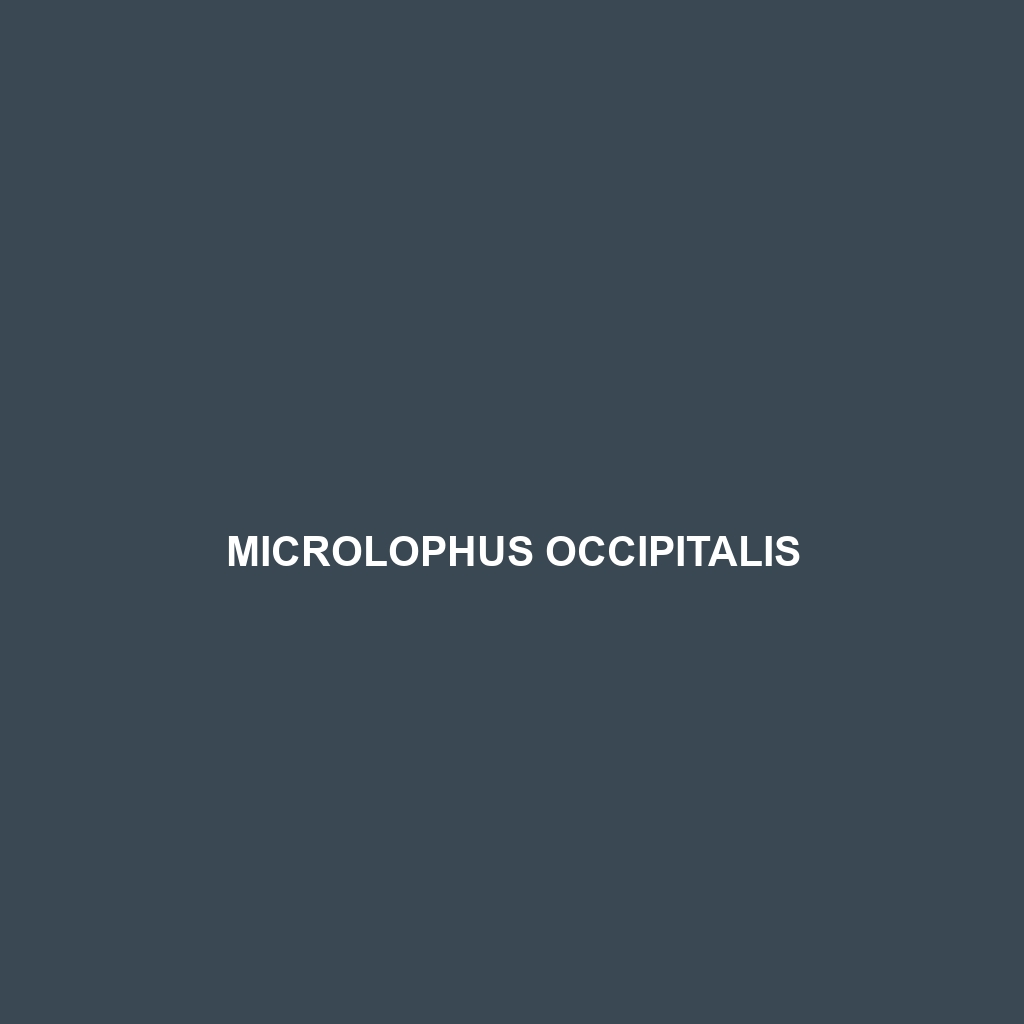Common Name
Microlophus occipitalis
Scientific Name
Microlophus occipitalis
Habitat
Microlophus occipitalis, commonly known as the Galápagos Lava Lizard, is primarily found in the Galápagos Islands, an archipelago situated in the Pacific Ocean, about 600 miles west of Ecuador. These islands feature a diverse range of habitats, including arid volcanic landscapes, lush vegetation, and coastal regions. The unique climatic conditions of the Galápagos, characterized by both warm and cool ocean currents, create varied environments that range from dry lowlands to humid highlands. Though often associated with rocky terrains and sandy beaches, Microlophus occipitalis can also inhabit areas in and around shrublands, which provide essential cover and food resources for their survival. The presence of these lizards in specific geographic zones indicates their adaptability to different climatic niches within the islands.
Physical Characteristics
Microlophus occipitalis exhibits distinct physical characteristics that make it easily recognizable among its counterparts. Adults typically reach sizes of about 15 to 20 centimeters (6 to 8 inches) in total length. Their body shape is elongated with a slender build, equipped with strong limbs for climbing and running. The color of Microlophus occipitalis varies significantly depending on the specific island and environmental conditions. Most individuals exhibit shades of brown or gray with darker stripes or spots, providing effective camouflage against rocky backgrounds. Notably, males generally show brighter coloration during breeding season, which includes vibrant orange or red tonalities around their heads, making them both visually stunning and essential for mating displays.
Behavior
The behavior of Microlophus occipitalis is fascinating and diverse. Primarily diurnal, these lizards are most active during the day, basking in the sun to regulate their body temperature. Their social interactions can range from territorial displays, especially among males, to group dynamics where individuals can often be found sunbathing together. Microlophus occipitalis is not known for long migrations; instead, they exhibit site fidelity, remaining within their established territories. During mating season, courtship rituals include push-up displays and head bobbing, critical for attracting receptive females. Interestingly, these lizards have developed unique behaviors to evade predators, such as remaining motionless or utilizing their natural camouflage until the threat passes.
Diet
Microlophus occipitalis is primarily an insectivore, feeding mainly on a diet consisting of small insects and arthropods. Their diet is essential not only for their growth and survival but also impacts the ecosystem by regulating insect populations. In addition to their primary insect-based diet, they also opportunistically consume plant matter, particularly when insects are scarce, which showcases their adaptability as a species. This omnivorous behavior allows them to thrive in various environmental conditions, making them resilient to changes in food availability
Reproduction
The reproductive cycle of Microlophus occipitalis typically occurs during the warmest months of the year. Mating can begin as early as March and extends through August, coinciding with increased environmental temperatures. After a successful mating season, females lay clutches of about 3 to 5 eggs, often hidden in sandy or loose soil to avoid predation. The gestation period lasts for several weeks, and the offspring hatch during the warm months, typically around the time food sources become more abundant. Parental care is absent in this species, as once the young are born, they are left to fend for themselves. This reproductive strategy allows for rapid population turnover, crucial for adapting to the island’s dynamic environmental challenges.
Conservation Status
According to the IUCN Red List, Microlophus occipitalis is classified as Least Concern in terms of conservation status. However, ongoing threats such as habitat degradation, invasive species, and climate change pose risks to its populations. Conservation efforts focus on habitat preservation and managing invasive species that threaten the ecological balance of the Galápagos Islands. Organizations and researchers are actively involved in monitoring these lizards to ensure that their populations remain stable and maintain their crucial role in the island’s ecosystems.
Interesting Facts
There are several intriguing facts about Microlophus occipitalis that highlight their unique role in the Galápagos ecosystem. For instance, these lizards often exhibit a fascinating phenomenon known as “sexual dimorphism,” where males and females not only differ in coloration but also in size and behavior traits, showcasing an evolutionary adaptation to enhance mating success. Additionally, they have been observed basking together in groups, which may offer protection from predators through collective vigilance. Their remarkable adaptation skills allow them to occupy diverse niches and maintain their populations despite the challenges posed by their volcanic habitat.
Role in Ecosystem
Microlophus occipitalis plays a vital role in the ecosystems of the Galápagos Islands. As insects are a significant part of their diet, these lizards contribute to controlling pest populations, which is crucial for maintaining ecological balance. Furthermore, by serving as prey for larger predators, such as birds and hawks, they are an integral part of the food web in their habitat. Their interactions with plant life, through the consumption of leaves and seeds, also assist in the dissemination of plant species, proving that this small lizard has a significant impact on the overall health of the environment.
